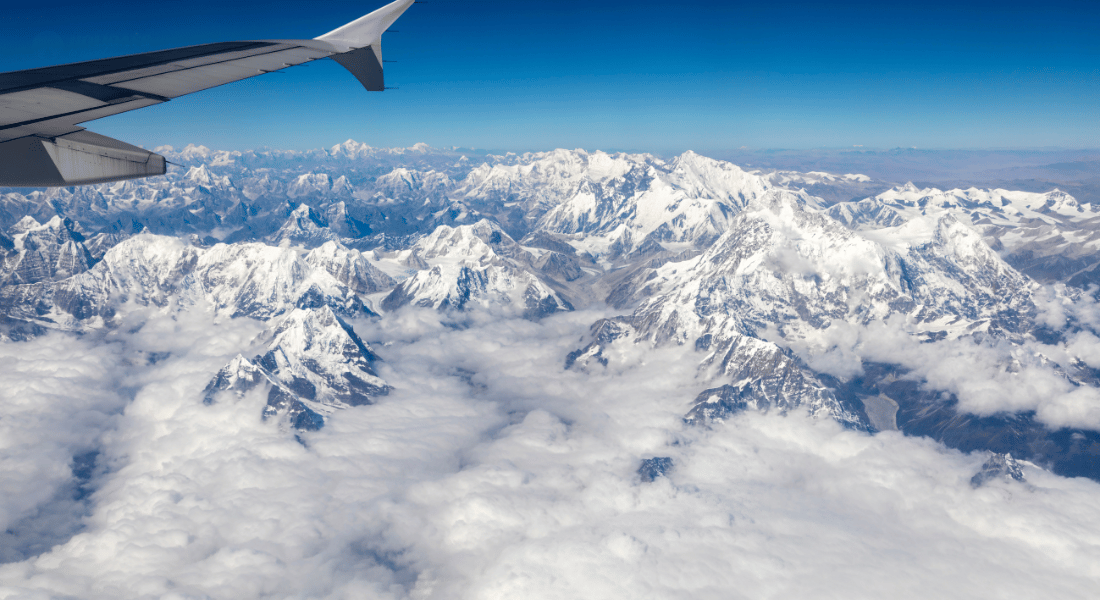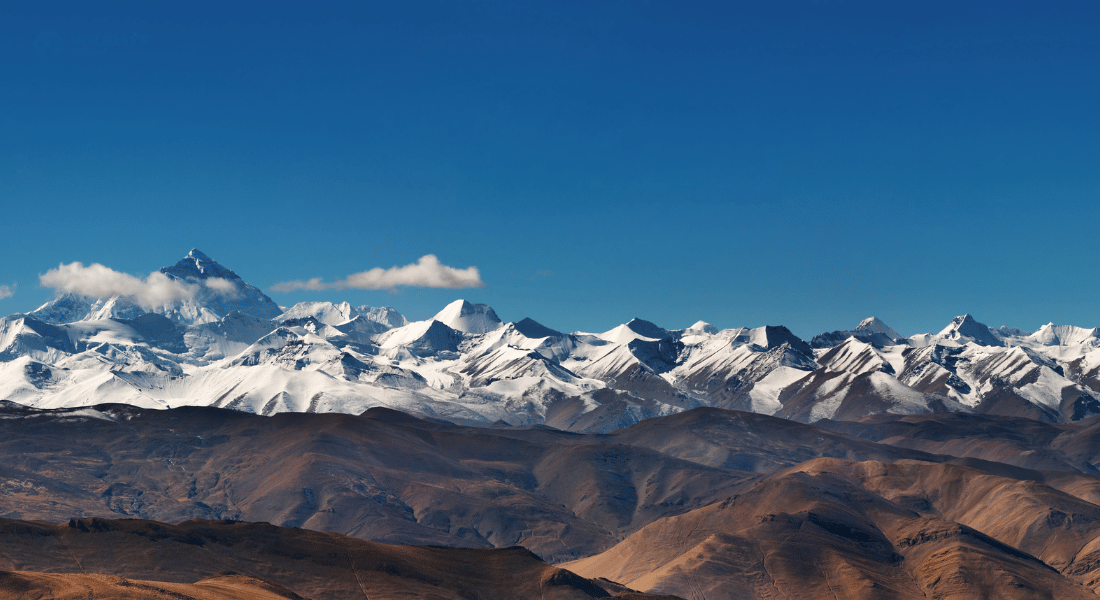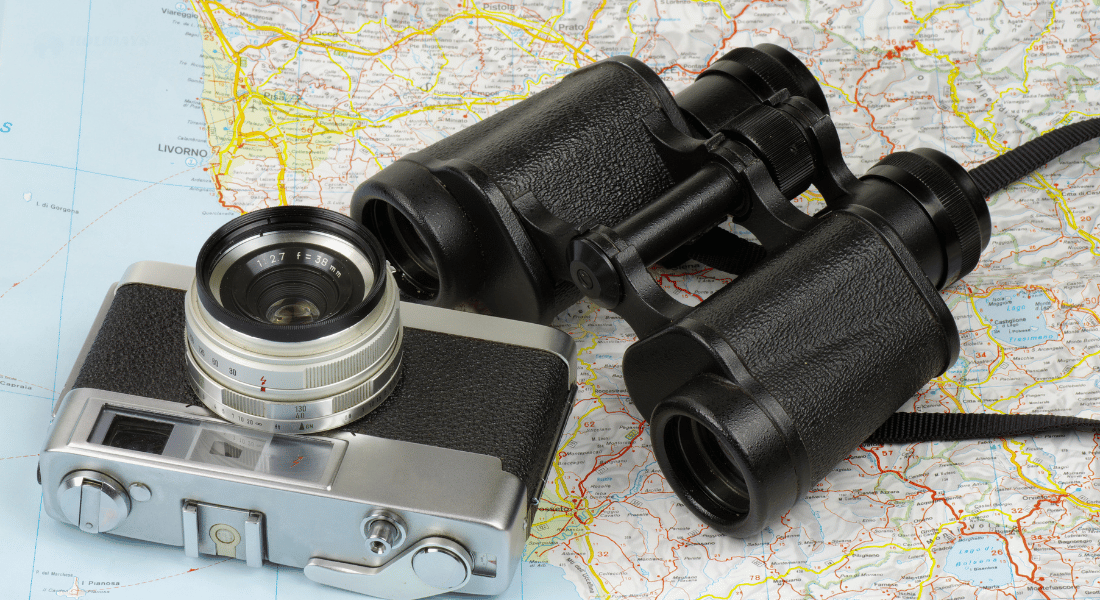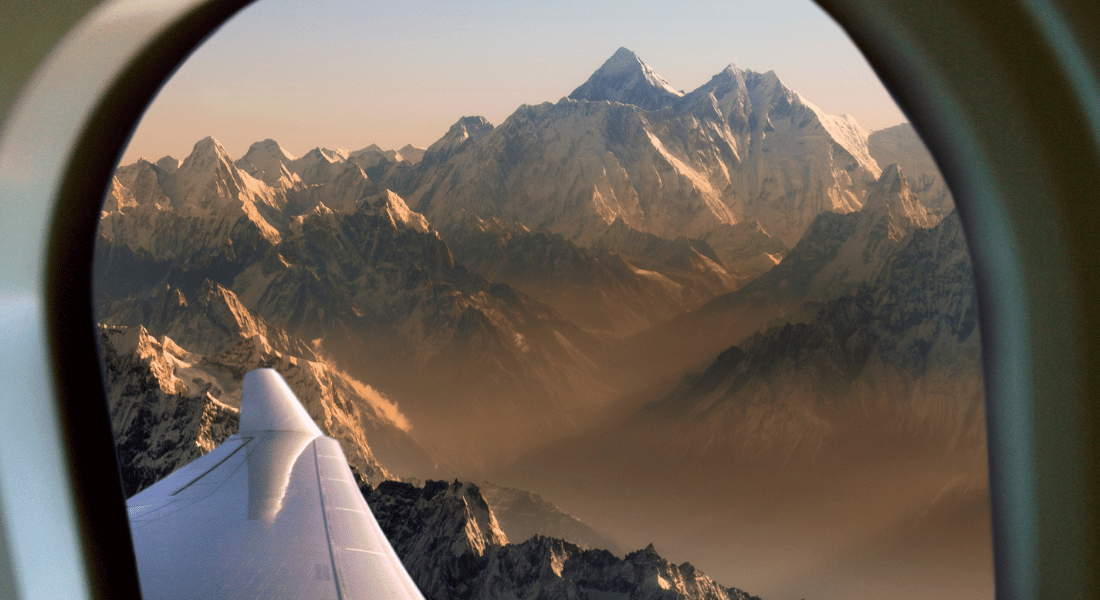Flying over Mount Everest, the tallest peak in the world, is a unique and awe-inspiring experience. Our blog, Mount Everest Flight in Nepal from Kathmandu, provides an in-depth overview of the Mount Everest flight from Kathmandu, detailing what you can expect and practical tips to make the most of this unforgettable journey. From the majestic Himalayan panorama to the practicalities of booking and preparing for the flight, this guide covers everything you need to know.
The Everest Mountain Flight is a scenic aerial tour offered by various airlines in Nepal. These flights provide passengers with a bird’s eye view of the majestic Himalayas, including a close-up look at Mount Everest. The flights usually last about an hour, offering a panoramic view of some of the world's highest peaks. This experience is perfect for those who want to witness the grandeur of the Himalayas without the physical demands of trekking.
This blog will cover every facet of the Everest mountain flight, from picking the best airline and flight time to what to expect during takeoff and landing. Along with helpful tips on how to be ready for the journey, we'll also go over what to pack, what you should carry, and how to take health precautions. By the end of this guide, you'll be well-equipped to enjoy a safe and unforgettable aerial journey over the majestic Himalayas.
Everest Mountain Flight Facts
Here are some facts related to Everest Mountain Flights that you might want to know:
|
Activity |
Everest Mountain Flight |
|
Flight Starts |
06:15 AM Onwards |
|
Duration |
50-60 Minutes |
|
Takeoff and Landing Point |
Tribhuvan International Airport (TIA) |
|
Altitude |
Upto 25,000 ft. |
|
Major Attractions |
|
|
Flight Operators |
|
|
Aircrafts |
|
Why the Everest Mountain Flight?
Taking the Mount Everest mountain flight in Nepal offers an unmatched opportunity to witness the grandeur of the Himalayas from an extraordinary vantage point. Unlike trekking to Everest Base Camp, which demands significant physical exertion and time commitment, this flight provides a convenient and accessible alternative. In just a one-hour journey from Kathmandu, travellers can behold the world's highest peak and its surrounding giants, making the breathtaking views of Everest accessible to all, regardless of physical ability or time constraints.

The experience begins as the plane ascends from Kathmandu up to 25,000 feet, gradually revealing a breathtaking panorama of the Himalayan landscape. Snow-capped peaks stretch as far as the eye can see, framed by deep valleys and sparkling glaciers. This aerial perspective offers a perspective of the Himalayas that is both humbling and exhilarating, showcasing the sheer scale and rugged beauty of these legendary mountains in a way that ground-level views cannot match.
The highlight of the flight undoubtedly comes when Mount Everest itself comes into view. Its towering summit and distinctive features are visible in breathtaking detail, offering passengers a profound appreciation for one of nature's most iconic landmarks. Whether you're a seasoned traveller or a photography enthusiast, the Everest mountain flight provides unparalleled opportunities to capture the splendour of the highest mountain range on Earth, ensuring memories that will last a lifetime. This journey not only showcases the natural wonder of the Himalayas but also offers a unique perspective that highlights the majesty and timeless allure of Mount Everest.
Everest Mountain Flight Booking
Flights can be booked online through the airline's website or through travel agencies in Kathmandu. It's advisable to book in advance, especially during peak tourist seasons, to secure a spot. Booking through a travel agency like us can sometimes offer additional convenience, such as transportation to and from the airport and assistance with any travel-related queries. Here are some simple procedures you can follow to book your flight with us:
-
Contact for inquiry: Reach out to us through our contact details provided on our website, email, or phone. We are available to answer any questions and provide information about the flight options and availability.
-
Number of Pax: Let us know the exact number of passengers who will be flying. This helps us check availability and provide you with accurate pricing.
-
Date confirmation: After confirming the number of passengers, we will check the availability of flights on your preferred dates. We recommend booking well in advance, especially during peak tourist seasons, to secure your spots.
-
Documents required: Each passenger needs to provide a valid passport copy. This is essential for flight booking and security purposes.
-
Payment procedures: We offer various payment methods, including credit card, bank transfer, and cash (if booking in person). Choose the option most convenient for you.
- Receiving flight tickets: Once your payment is confirmed, we will issue your flight tickets. These will be sent to you via email or can be picked up in person from our office.
Everest Mountain Flight Cost
Flying over Mount Everest, the tallest peak in the world, offers a breathtaking experience that attracts many tourists. These mountain flights are typically operated by airlines based in Nepal, such as Buddha Air, Yeti Airlines, and Shree Airlines. Here is a general overview of the costs:
|
Indian Nationals |
Other Nationals |
|
INR 12,000 |
USD 300 |
|
(Including airport pickup and drop) |
|
Note: The cost of an Everest mountain flight can vary depending on several factors, including the airline and the time of year.
Everest Mountain Flight Key Highlights
The Everest mountain flight offers an extraordinary opportunity to witness the stunning beauty of the Himalayas from the sky. Key highlights include the majestic panorama of the Himalayan range, a close-up view of Mount Everest's towering peak, and sightings of other significant mountains such as Lhotse, Cho-oyu, Shisapangma. This section will detail these breathtaking sights, providing an overview of what makes this flight a must-do experience for anyone visiting Nepal.

The Majestic Himalayas
The flight offers stunning views of the Himalayan range, presenting a visual treat of snow-capped peaks, glistening glaciers, and deep valleys. This aerial perspective allows you to see the vastness and beauty of the region in a way that is impossible from the ground. You will be able to identify key landmarks and understand the geographical layout of this magnificent mountain range.
Close-up of Mount Everest
The main highlight is the close-up view of Mount Everest, the highest peak in the world at 8,848.86 metres (29,031.69 feet). The flight path takes you near enough to admire its towering summit and rugged slopes, providing a unique photographic opportunity. Seeing Everest from this perspective offers a deeper appreciation of its majesty and the challenges faced by climbers to reach its limit.
Additional Note-worthy peaks
In addition to Everest, you will also see other significant peaks such as Lhotse (8,516 m), Cho-oyu (8201 m), Shisapangma (8103 m) and more amazing peaks. Each of these mountains has its own distinctive features and stories, contributing to the rich tapestry of the Himalayan landscape. These peaks are part of the eight-thousanders, mountains that exceed 8,000 metres in height, making the flight an extraordinary opportunity to see some of the tallest mountains on earth in one journey.
Mount Everest Flight Preparation
Preparing for your Everest mountain flight involves several important steps to ensure a smooth and enjoyable experience. From selecting the right airline to booking your flight at the optimal time, careful planning can make all the difference. This section will guide you through the essentials of choosing a reputable airline, the best seasons for clear views, and how to secure your booking for an early morning departure to maximise your chances of witnessing the Himalayas in all their glory.
Choosing the Right Airline
Several airlines offer Everest mountain flights, including Buddha Air, Yeti Airlines, and Shree Air. You can choose the airline based on its regular flight operations, such as Buddha Air, which operates more flights than others. It's also wise to check the seating arrangement to ensure you get the best window seat for the perfect views. Some airlines might offer slightly different routes or additional services, such as cockpit visits, so consider these factors when making your choice.
Best time to fly
The best time to take the flight is during the spring (March to May) and autumn (September to November) seasons. During these times, the weather is generally clear, providing optimal visibility of the mountains. Avoid the monsoon season (June to August) when clouds and rain can obstruct views, and winter (December to February) when the weather can be more unpredictable.
Timing
The flights depart early in the morning, around 6 AM, when the skies are usually the clearest. You need to arrive at the airport at least an hour before the scheduled departure time. Early morning flights benefit from the calmest weather and the clearest views, as the atmosphere tends to be more stable and free from the heat-induced turbulence that can develop later in the day.
Experience from Takeoff to Landing
The journey from takeoff to landing on an Everest mountain flight is a breathtaking adventure, offering unparalleled views of the world's highest peaks. From the moment you leave Kathmandu's Tribhuvan International Airport, you'll be captivated by the changing landscapes as the plane ascends from the city into the heart of the Himalayas. This section will walk you through the highlights of the flight, including the initial ascent, the panoramic vistas of the Himalayan range, and the awe-inspiring close-up view of Mount Everest.
Take off and Initial Ascent
The flight begins with a takeoff from Tribhuvan International Airport in Kathmandu. As the plane ascends, you'll leave the bustling city behind and enter a world of towering peaks and pristine landscapes. The initial ascent provides views of the Kathmandu Valley, gradually giving way to the rugged terrain of the Himalayas.
The Himalayan Panorama
Once at cruising altitude, the panoramic views of the Himalayas unfold before your eyes. The flight attendants often provide commentary, pointing out various peaks and landmarks. This part of the journey allows you to take in the vast expanse of the Himalayas, with its intricate patterns of ridges, valleys, and glaciers.
The Highlight: Mount Everest
As you approach Mount Everest, the excitement builds. The plane flies close enough to give you an intimate view of its summit, ridges, and surrounding glaciers. This is the pinnacle of the flight experience and a moment to capture with your camera. The sight of Everest, often referred to as "Sagarmatha" in Nepali and "Chomolungma" in Tibetan, is a humbling reminder of nature's grandeur.
Closer Look
Some airlines, like Buddha Air, also offer a cockpit visit, allowing passengers to get an even better view of Everest and the surrounding peaks. This unique opportunity can provide an unmatched photographic angle and a more immersive experience. The pilots, who are experienced in navigating these high altitudes, can offer additional insights into the geography and history of the region.
Practical Tips for Enjoyable Experience
To make the most of your Everest mountain flight, it's important to be well-prepared and comfortable. Practical tips such as dressing in layers, bringing essential items like a camera and sunglasses, and taking health precautions can enhance your overall experience. This section will provide useful advice on what to wear, what to bring, and how to stay healthy and comfortable during the high-altitude flight, ensuring that your journey is both enjoyable and memorable.

Seat Selection
To experience the breathtaking majesty of Mount Everest and other mighty mountains, choose a seat on the left side of the plane for the best views of the towering peak. The left side typically offers unparalleled perspectives as you soar past this iconic summit. If you are two passengers, one of you can choose a seat on the left while the other selects a seat on the right to enjoy equally captivating perspectives, turn wise.
What to wear
Dress in layers, as the temperature can vary. While the plane is climate-controlled, it can get chilly. Wear comfortable clothing and sturdy shoes. A light jacket or sweater can be useful, especially if you tend to feel cold easily.
Essential items to bring
Bring a good camera with a zoom lens to capture detailed shots of the mountains, sunglasses to reduce glare, and a light jacket. Binoculars can also enhance your viewing experience by allowing you to see more distant peaks and details. A small notepad can be handy to jot down the names of peaks and other interesting facts mentioned during the flight
Health Precautions
Although the flight is short, it reaches high altitudes. If you have respiratory or cardiovascular issues, consult with your doctor before booking. Stay hydrated and avoid alcohol or heavy meals before the flight. If you are prone to motion sickness, consider taking appropriate medication beforehand.
Conclusion
Our blog on the Mount Everest flight from Kathmandu provides a comprehensive guide for those seeking an extraordinary aerial journey through the Himalayas. It has covered essential aspects such as selecting the right airline, understanding the best times for optimal visibility, and practical tips for a comfortable and memorable experience. This journey offers a convenient and accessible way to witness the world's highest peak and its surrounding majesty firsthand.
Throughout this guide, we aimed to convey the transparency, magnitude, and beauty of the Everest mountain flight experience. From the exhilarating takeoff over Kathmandu's bustling cityscape to the serene views of snow-capped Himalayan peaks stretching as far as the eye can see, every moment in the air promises awe and wonder. This journey provides an unmatched perspective on the majestic Himalayas, leaving travellers with unforgettable memories and a deeper appreciation for the natural wonders of our world.
We hope this blog has inspired you to participate in this remarkable journey, offering insights and tips that ensure your Mount Everest flight is not just an adventure but a transformative experience. Whether drawn to the thrill of flying over Everest or captivated by capturing its beauty through photography, this flight promises an unparalleled glimpse into the majesty of one of Earth's most iconic landmarks.

